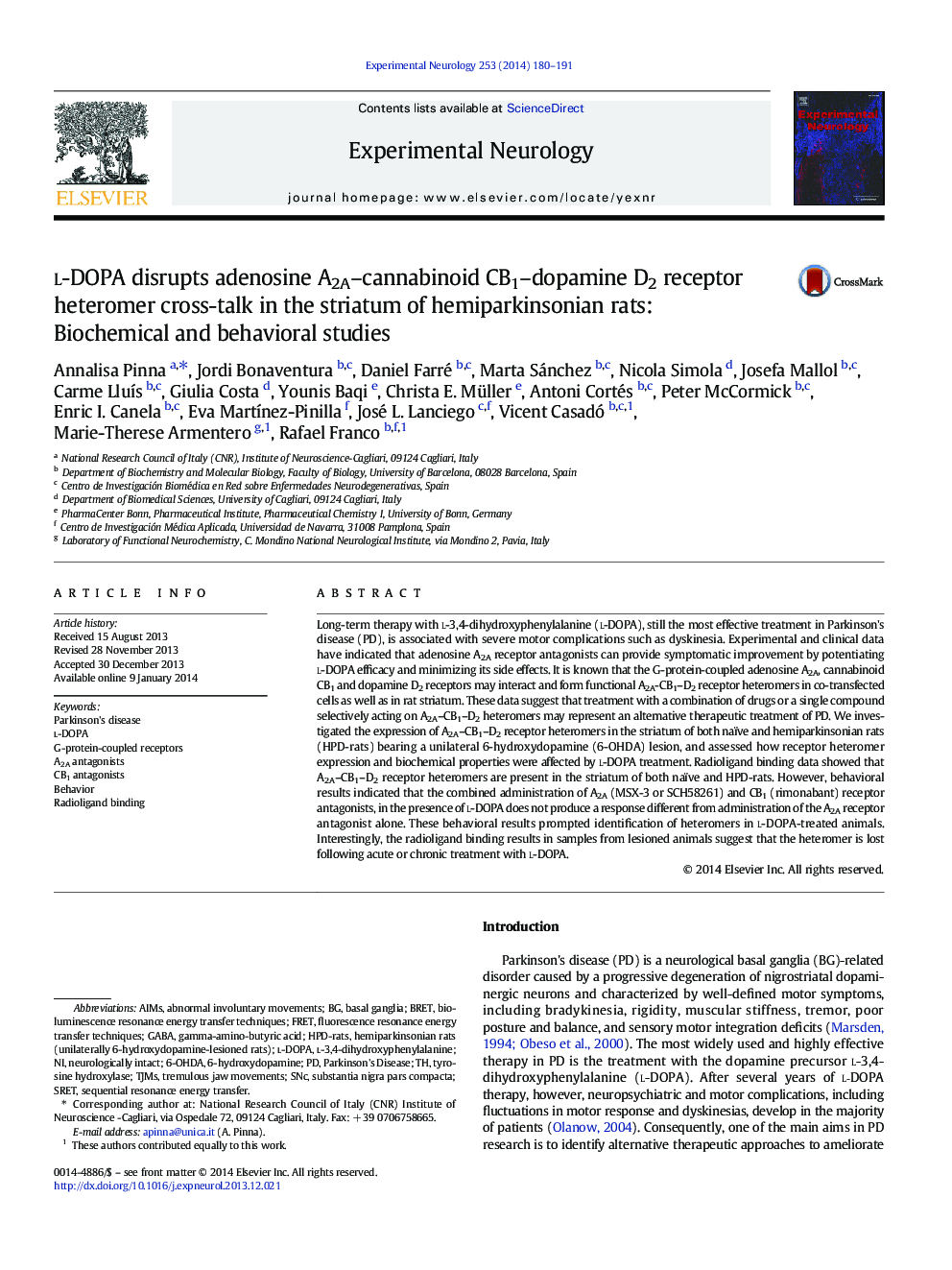| Article ID | Journal | Published Year | Pages | File Type |
|---|---|---|---|---|
| 6017854 | Experimental Neurology | 2014 | 12 Pages |
â¢A2A-CB1-D2 receptor heteromer cross-talk present in the striatum of naïve rats.â¢Heteromer cross-talk found in the striatum of hemiparkinsonian rats.â¢Lack of synergy of adenosine A2A + cannabinoid CB1 antagonists in l-DOPA-treated-rats.â¢Heteromer cross-talk lost after acute or chronic l-DOPA treatment.â¢First report on receptor heteromer disruption upon therapeutic treatment.
Long-term therapy with l-3,4-dihydroxyphenylalanine (l-DOPA), still the most effective treatment in Parkinson's disease (PD), is associated with severe motor complications such as dyskinesia. Experimental and clinical data have indicated that adenosine A2A receptor antagonists can provide symptomatic improvement by potentiating l-DOPA efficacy and minimizing its side effects. It is known that the G-protein-coupled adenosine A2A, cannabinoid CB1 and dopamine D2 receptors may interact and form functional A2A-CB1-D2 receptor heteromers in co-transfected cells as well as in rat striatum. These data suggest that treatment with a combination of drugs or a single compound selectively acting on A2A-CB1-D2 heteromers may represent an alternative therapeutic treatment of PD. We investigated the expression of A2A-CB1-D2 receptor heteromers in the striatum of both naïve and hemiparkinsonian rats (HPD-rats) bearing a unilateral 6-hydroxydopamine (6-OHDA) lesion, and assessed how receptor heteromer expression and biochemical properties were affected by l-DOPA treatment. Radioligand binding data showed that A2A-CB1-D2 receptor heteromers are present in the striatum of both naïve and HPD-rats. However, behavioral results indicated that the combined administration of A2A (MSX-3 or SCH58261) and CB1 (rimonabant) receptor antagonists, in the presence of l-DOPA does not produce a response different from administration of the A2A receptor antagonist alone. These behavioral results prompted identification of heteromers in l-DOPA-treated animals. Interestingly, the radioligand binding results in samples from lesioned animals suggest that the heteromer is lost following acute or chronic treatment with l-DOPA.
